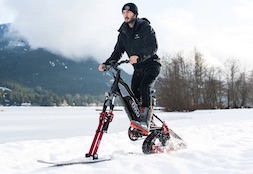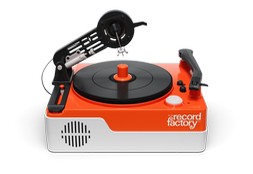The idea for San Francisco's Power Plant Fitness, the world’s first cannabis gym, came to founder Jim McAlpine as a teenager, after he ripped a bong before lifting weights in his parent’s garage.
“In the ‘80s, a cannabis gym would have never been possible,” he explains. “But now we’ve started moving down the path of raising money, and people seem to be really intrigued by it. It just took like wildfire.”
Mixing weed and workouts may seem radical, even antithetical, to many pot smokers. But since the recreational use of marijuana was legalized in states like Colorado, Washington and California, the influx of weed in everything from food and beverages, to candles, to lube, has inspired a movement where being high is less a temporary state of mind than a permanent aspect of one’s overall lifestyle. Given its natural medicinal properties, it’s perhaps only natural that the health and fitness industry would be weed’s next frontier.
“If you feel bummed, it helps your mood lift. If you need food, it helps you feel hungry. If you need focus, the right dosage helps you think better,” Dori Edwards, the owner of Michigan’s Bloom City Club medical marijuana dispensary, contends.
Even though cannabis’s infamous, mouth-drying side effect can seem like a bit of a drag, it can help to gently remind active people to nourish their bodies. “You’re more inclined to feel thirsty and remember that you need to drink more,” Edwards points out, if optimistically. “The endocannabinoid system regulates every other system in the body and brings it into balance, which is is why it works on the digestive system.”
As for whether the cannabis industry can successfully crossover into the fitness industry, Edwards insists that it already has: “We see high yoga classes popping up already. If it can help athletes train by increasing focus and endurance, and also help their muscles recovery more quickly, it's kind of a win-win.”
McAlpine is banking on that being the case. Since opening his gym, he’s pursued other ventures in the burgeoning weed/fitness space, like the aptly-named 420 Games, which is billed as a kind of Tough Mudder for yogis, runners, riders, skaters, walkers and weed enthusiasts alike.
“The point of 420 games isn’t just to get high so a bunch of people can stand around smoking and looking like stoners,” McAlpine says, noting that, while the even hosts about 100 vendors with cannabis-infused products, actually smoking cannabis is not allowed. “It’s an athletic event that advocates healthy cannabis use for athletes that support the cannabis lifestyle.”
As a supplement to a healthy diet and regular exercise, McAlpine suggests CannAthlete's Activation Spray for focus, and their Recovery Serum to aid your post-workout recovery.
“I’ve used lotions and balms for post-workout recovery, but when I use the ones that have CBD in it, I feel a significant increase in my recovery and analgesic pain relief,” he says. “I’m not going to say it takes pain away completely, but I feel 25-50 percent better pain relief and overall effectiveness.”
Another such proponent of cannabis is Dr. Andrew Kerklaan. His company, Dr Kerklaan Therapeutics, incorporates CBD, a non-psychoactive cannabinoid, and THC, the principal psychoactive cannabinoid associated with marijuana, into topical treatments for everything from muscle recovery to PMS relief, sleep and skin inflammation. Both offer alleviation by interacting with nerve receptors to reduce our perception of pain.
“While THC acts as a great pain killer for delayed onset muscle soreness all the way up to severe injury,” Kerklaan, who has 20 years of pain management experience, claims, “when combined [with CBD] you can reduce pain, speed [up] recovery and avoid long-term rehab.”
In addition to what the plant’s compounds can do for your body after a workout, Dr. Kerklaan considers cannabinoids to not only be a safe alternative to addictive pharmaceuticals, but an overall regulator to help with digestion, sleep and immune response, especially in the context of athletic injuries.
“Oftentimes with athletic injuries, your body is overreacting. Your immune system is creating more inflammation than it needs to, and cannabinoids work to safely regulate that.”
Although the current stigma of marijuana requires evidence-based persuasion, Kerklaan finds that most people have open minds about treatment once they’ve seen the facts.
“The moment people start to understand it a bit more, the potential benefits that cannabinoids have to offer becomes pretty clear,” he says. “People’s interests are piqued, so they’re investigating it on their own to see what [effect] cannabis-derived treatment can have on their overall health, which doesn’t necessarily have to have a psychoactive effect.”
While these medical and fitness professionals believe the psychoactive effects of THC can be a valuable component to a successful workout, even seasoned users like McAlpine acknowledge that, depending on the dosage, you could find yourself staring blankly at the Smith machine, listening to other people’s muscles grow. The key is to incorporate cannabis into your workout the same way you would any other workout supplement: deliberately, with patience.
“It’s important to start very slow, figure out who you are and how cannabis affects you, and make sure it’s a viable option for you personally,” McAlpine says. “It’s something people have trouble understanding unless they’ve lived that lifestyle. But that’s what makes it so interesting.”






